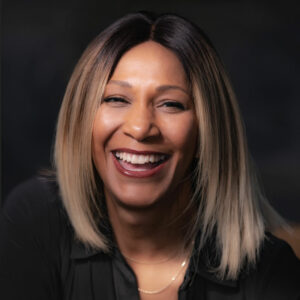Steps to Build an Inclusive Culture by Starting with Mindset First

Want a more diverse and inclusive culture in your organization, but not sure how to start? At a loss for how to fund D&I strategies and initiatives? That’s ok! Actually, starting with yourself to create a D&I mindset is the most important thing to do to successfully create a culture of inclusion.
Why D&I at Work Matters
So, what exactly is D&I is and why do we need to cultivate it in our workforce?
A diverse workforce reflects a broad spectrum of demographic differences. We often think of visible or more obvious differences such as race, religion, gender, sexual orientation, age, physical ability and more. But we also need consider less visible diversity such as socio-economic backgrounds, education levels, personality types, political orientation and life experiences.
An inclusive culture is one in which all differences are welcome, respected and valued.
Research proves the numerous benefits of diverse and inclusive teams and organizational cultures. According to recent studies, diverse and inclusive companies make better business decisions and are 35 percent more likely to outperform their competition. And don’t forget recruiting and retention – 67 percent of people consider diversity an important factor when deciding where to work.
Achieving D&I Success
Creating sustainable, diverse and inclusive cultures requires real effort across an organization. You need a strategy to support it, including metrics and expectations integrated into every part of the business unit (from marketing and sales to finance and legal), as well as the organization’s performance planning and reward systems.
However, the most important way to achieve success with creating sustainable diverse and inclusive cultures is to have leadership commitment. Culture change starts at the top, so leaders need to lead the change by modeling inclusive behaviors themselves.
To do that, leaders need a D&I mindset. Successfully leading with a D&I mindset doesn’t mean you have to be an expert in every facet of diversity. That’s impossible. Having a D&I mindset is really about having the curiosity and the courage to learn about people who are different than you.
Start with Your Personal Social Circles
D&I training plays its role, but a classroom experience can only take you so far with real growth and development in the D&I space. As a leader, your authentic self is evident to those you lead, so if you haven’t done your own work to expand your ability to welcome, value and respect differences, you won’t succeed in fostering a diverse and inclusive culture. It all starts with the self and much of the work on self happens in our personal lives outside of work.
Let’s look at me as an example. To be perfectly honest, my social circle hasn’t always included individuals who hold political views different from my own. At work, I have no problem with people with different political views. I’m a professional and eager to work with anyone to achieve our common business goals. But in my personal life, I don’t always challenge myself to forge friendships with people who hold political views that differ from mine.
I had the opportunity to step outside of my comfort zone by participating in a D&I program where people with different backgrounds were paired to foster cross-cultural understanding. As an African-American woman, I was paired with a white man. I knew we had different political beliefs, so I was really nervous. What if I unintentionally said something offensive? What if we got into an argument?
We cautiously eased into conversation at first. It didn’t take us long to get into sharing how we grew up, our fears and our proudest moments. By sharing our stories and listening, we quickly realized that despite how we vote, we shared more in common as humans that we ever would have thought. While we will never agree on politics, we did forge a very close friendship.
While it’s a human tendency to gravitate towards people similar to you, it’s so important to replace biases and stereotypes with real information and experiences to inform your thinking. At the end of the day, having diverse friends makes you better informed, more thoughtful, more empathetic and more balanced – all competencies for a great leader!
Three Easy D&I Steps
Developing a D&I mindset is a journey with no finish line. It’s a process of progressively becoming more aware. To get started on your journey, embrace the 3Cs – courage, coffee and conversation:
- Courage: Have the courage to be honest about your biases. Notice who you don’t hang out with or have over for dinner. Dimensions of diversity missing in your personal circle could be an indication where you have implicit biases or stereotypes worth exploring. Look beyond obvious differences and consider hidden ones like socio-economic status, professional status, education level, political views and more. Put yourself in situations to meet people unlike yourself by volunteering, attend community events, and choosing different places to socialize where diversity is more prevalent.
- Coffee: Invite people who represent dimensions of diversity missing in your personal life to coffee with the simple objective of getting to know them.
- Conversation: Don’t worry about putting your foot in your mouth by asking questions. As long as questions come from a place a genuine curiosity, you’ll be fine. Use three simple phrases guaranteed to spark interesting conversations:
- “I’m curious to know…” – this is a way of asking something on your mind without casting judgement
- “Tell me more” – give someone the opportunity to expand on the question in whatever way is meaningful to them
- “Thanks for sharing” – thank the person for being vulnerable reciprocate by sharing something about yourself
Don’t ask or expect anyone you are meeting with to speak on behalf of or represent the view point of any particular group. No two people are alike. The beauty of meeting people different than you is you get to know the many nuances and differences inherent in difference. The more people you get to know who are different than you, the broader, deeper and richer your understanding of complex issues will be.
When in Doubt, Consider South Africa
Before you dismiss the notion of achieving a diverse, equitable and inclusive culture as Pollyannaish, consider South Africa.
I lived in South Africa from 1996 to 1998. It was two years after the end of apartheid, after Nelson Mandala was released from prison and became president. I got to experience what it was like for a country to transition from a deeply divided apartheid state to a unified democracy.
Much of this was made possible through the work of the Truth and Reconciliation Commission, which was founded in the belief that truth was the only means by which South Africa could come to a shared understanding of their past in order to forge a new identity in the future. The commission, led by Desmond Tutu, held hearings across the country in churches and community centers, where victims of crimes under apartheid and perpetrators of crimes could come forward and share their stories in the spirit of seeking understanding and healing.
The stories were aired on TV every Sunday, which helped spark a spirit of listening, learning and relationship-building across the country. I saw before my eyes how an intentional effort to uncover and understand the human experience common among all of us beyond race, culture and political affiliation healed an entire country.
If it can be done in South Africa, we can certainly create greater diversity and inclusion within our own mindsets and organizational cultures. Start with yourself and consider it a new lifelong journey of understanding others.
Let's Connect
Beth Ridley is a former corporate executive turned organizational transformation consultant, speaker and author. Beth combines 25 years of global leadership and management consulting experience with expertise in diversity and inclusion and positive psychology to partner with leaders to transform workplace cultures to better achieve their vision and goals. Beth’s work is featured in national publications and she frequently delivers keynotes and workshops at events around the world. Beth lives with her husband and three children in Milwaukee, Wisconsin.

